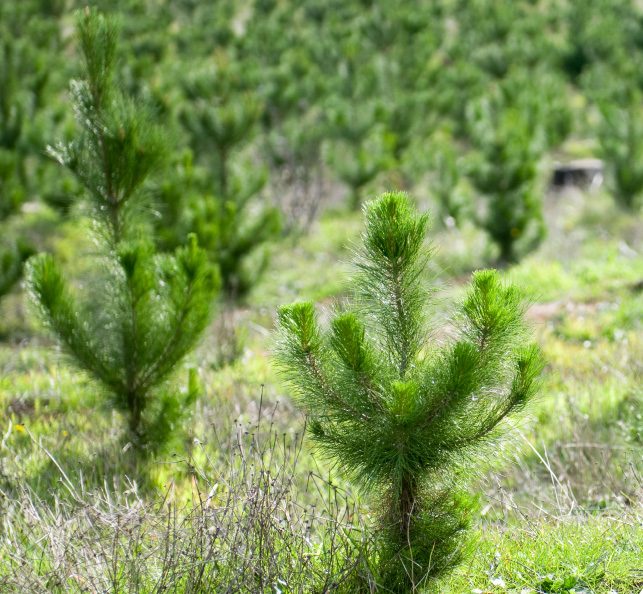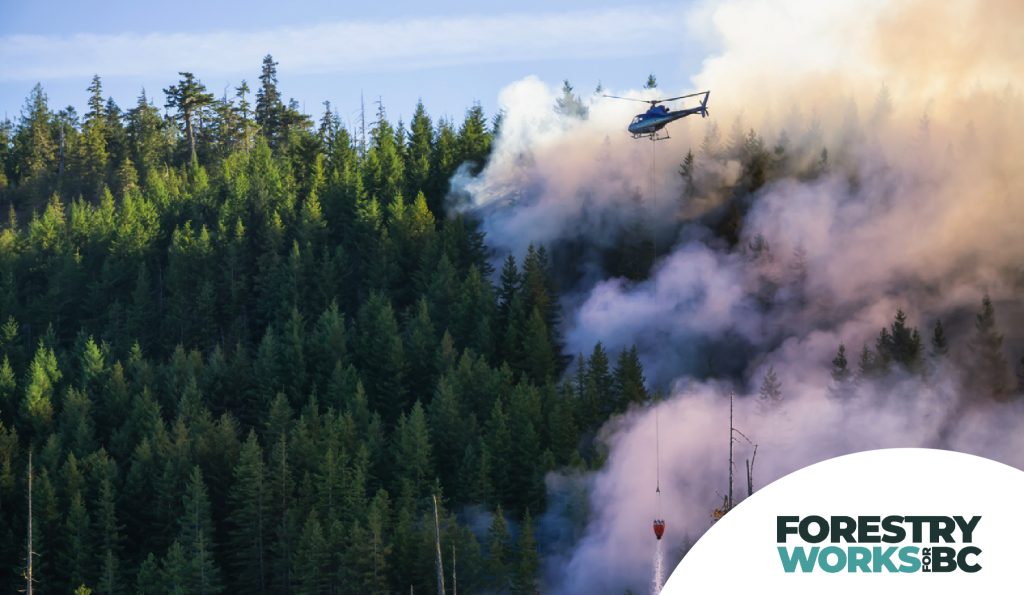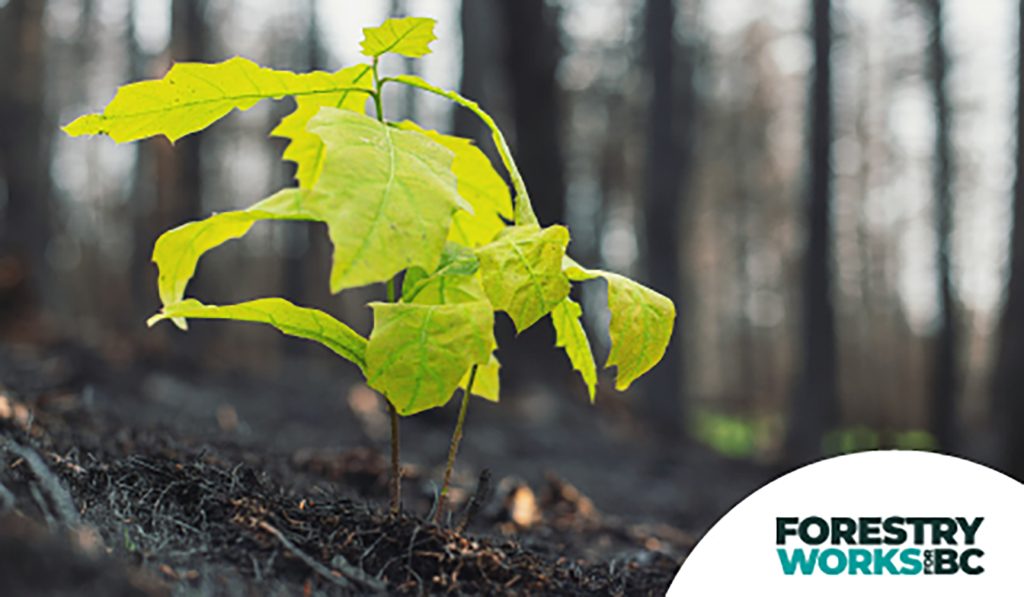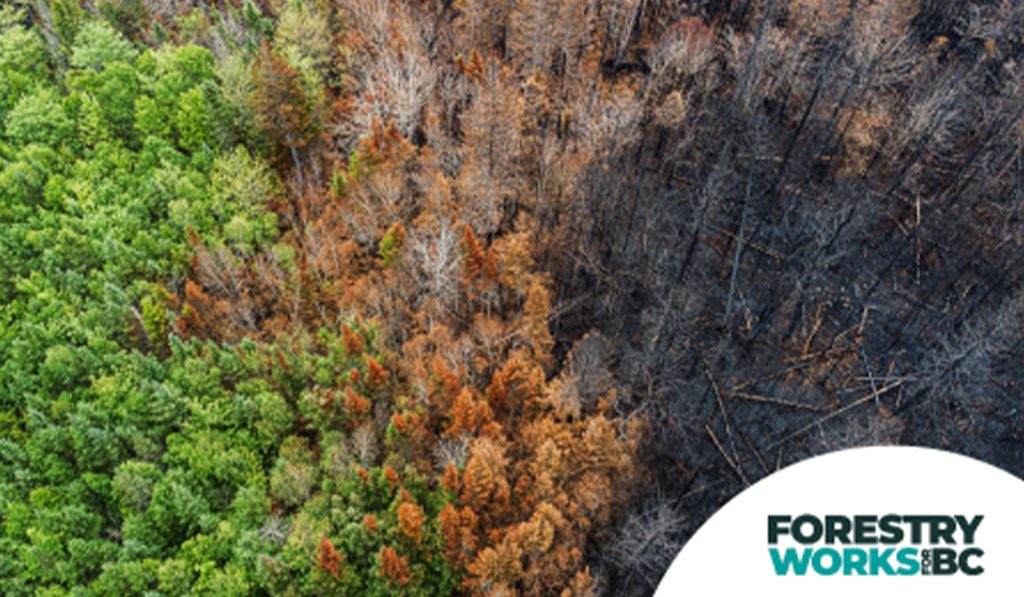BC Forestry: Sustainable Today, Strong Tomorrow

British Columbia’s forests are managed for long-term sustainability, with most areas protected and the remainder responsibly harvested. Forestry Works for BC highlights how forest workers, reforestation, and environmental stewardship ensure a thriving natural legacy for future generations.
Forestry Works For … British Columbia’s Economy

Forestry is the backbone of British Columbia’s economy. It supports more than 100,000 jobs, funds vital public services, and fuels community investment across the province — proving that when forestry works, we all do better.
British Columbia to Reduce Wildfire Risks

British Columbia has faced some of the most expensive wildfire seasons in history since 2017, with millions of hectares burned and nearly a billion dollars in damages in 2023 alone. Understanding wildfire trends is key to protecting our forests, communities, and economy.
British Columbia’s Forests: Fact and Opinion – How much should be saved?

Forestry in British Columbia is playing a crucial role in addressing climate change by both reducing greenhouse gas emissions and capturing carbon naturally. By minimizing the amount of wood that burns or decays, B.C. forestry helps prevent emissions, while also producing sustainable green building materials and renewable energy. Additionally, reforestation efforts, including planting over 200 million trees annually, accelerate carbon absorption. Strict regulations and advanced techniques ensure high survival rates for newly planted trees, reinforcing the industry’s commitment to climate action. Through these efforts, B.C. forestry demonstrates how nature-based solutions can combat global warming effectively.
A Climate Solution: Carbon Capture and Storage, Naturally

Forestry in British Columbia is playing a crucial role in addressing climate change by both reducing greenhouse gas emissions and capturing carbon naturally. By minimizing the amount of wood that burns or decays, B.C. forestry helps prevent emissions, while also producing sustainable green building materials and renewable energy. Additionally, reforestation efforts, including planting over 200 million trees annually, accelerate carbon absorption. Strict regulations and advanced techniques ensure high survival rates for newly planted trees, reinforcing the industry’s commitment to climate action. Through these efforts, B.C. forestry demonstrates how nature-based solutions can combat global warming effectively.
Restoring Ecological Balance in British Columbia

For thousands of years in British Columbia, natural fires and cultural fires deployed by First Nations peoples occurred on a variety of landscapes, maintaining a healthy ecological balance. However, in recent decades, fire suppression policies and restrictions on cultural burns have led to overgrown, overcrowded, and unhealthy forests. With climate change causing hotter and drier summers, these conditions have set the stage for catastrophic wildfires, vastly different from the smaller, lower-intensity fires that once rejuvenated ecosystems. Experts now recognize that reintroducing controlled burns can help restore forests, benefiting communities, the economy, and the environment.
British Columbia’s Forests are a Green Energy Powerhouse

Forests are sometimes called the ‘lungs of the earth’ because growing trees absorb carbon dioxide from the air while releasing oxygen. However, when trees die or burn in wildfires, they release greenhouse gases, including methane and nitrous oxide. Utilizing forest biomass for energy can help reduce emissions while creating economic opportunities. Countries like Sweden and Finland have successfully used bioenergy to reduce wildfires and fossil fuel dependence, a model that British Columbia could learn from.
